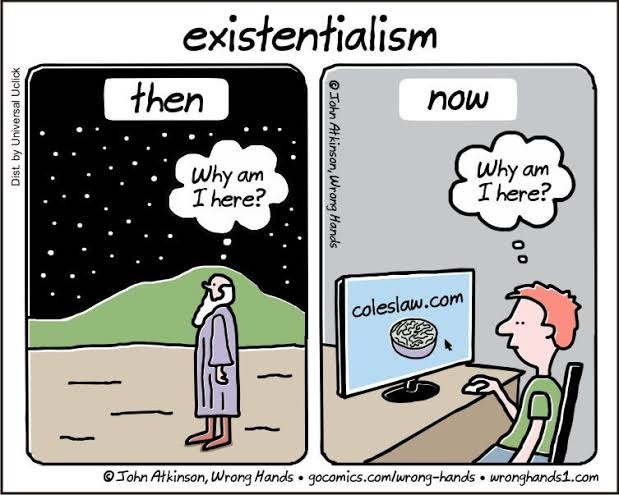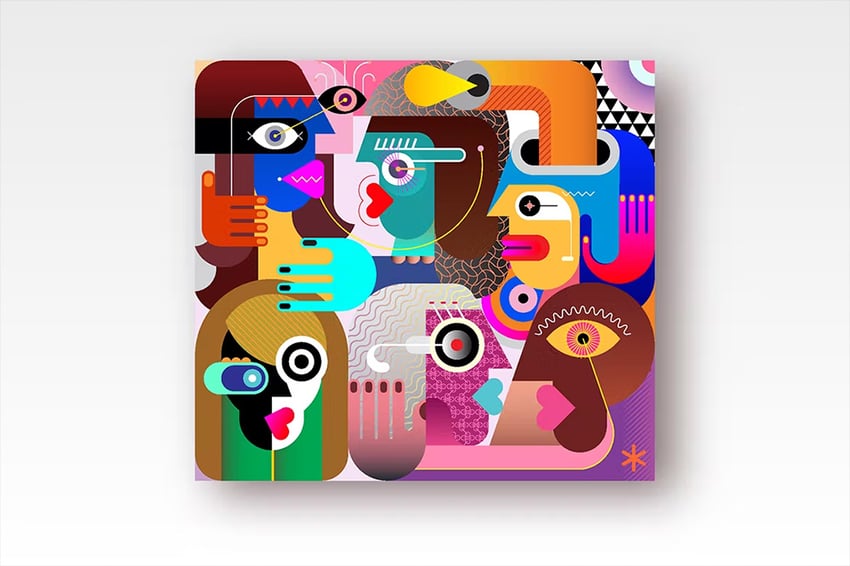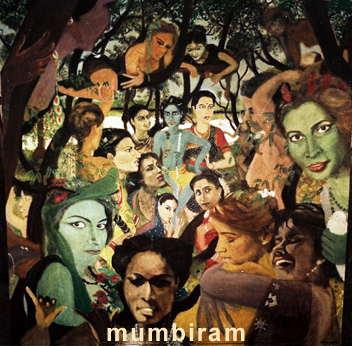This Flipped Learning Activity given by Megha ma'am. Of Trends and Movement.
1. What is Modernism?
Modernism is a broad cultural movement that emerged in the late 19th and early 20th centuries, influencing art, literature, architecture, music, and philosophy. It was a response to rapid industrialization, urbanization, and the upheavals of World War I, embracing new ideas that broke away from traditional forms and values.
• Characteristics of Modernism.
Modernism is characterized by a radical shift from traditional artistic, literary, and architectural styles, embracing innovation and rejecting past conventions. Here are some key characteristics:
(1) Rejection of Tradition :
- Modernists broke away from classical forms, realism, and conventional storytelling or artistic techniques.
- Traditional religious, social, and moral values were often questioned.
(2) Experimentation and Innovation :
- In literature: Stream-of-consciousness writing, fragmented narratives, and non-linear storytelling (e.g., James Joyce, Virginia Woolf).
- In art: Abstract, surrealist, and cubist styles (e.g., Picasso, Kandinsky, Dalí).
- In music: Atonality, dissonance, and unconventional structures (e.g., Stravinsky, Schoenberg).
(3) Focus on Subjectivity and Individualism :
- Emphasis on personal perspective, inner experiences, and psychological depth.
- Exploration of alienation, existential crises, and self-awareness.
(4) Fragmentation and Disillusionment :
- Works often reflect a sense of chaos, disorder, or brokenness, influenced by World War I and social changes.
- Literature and art depict fragmented realities, with multiple viewpoints and disjointed storytelling.
(5) Interest in Modern Life, Technology, and Urbanization
- Depictions of cities, machines, speed, and industrialization (e.g., Futurism movement).
- Questioning of the impact of modernity on human identity and society.
(6) Play with Form and Language :
- Literature abandoned conventional grammar and punctuation (e.g., e.e. cummings’ poetry).
- Architecture emphasized minimalism, functionality, and rejection of ornamentation (e.g., Bauhaus movement).
(7) Abstract and Symbolic Representation :
- Art and literature moved away from literal representation, using abstract forms and symbolism.
- Dreams, subconscious thoughts, and surreal elements became central themes (e.g., Surrealism).
(8) Sense of Loss and Uncertainty :
- Many modernist works reflect a sense of despair, questioning absolute truths and traditional structures.
- Themes of existentialism and nihilism often appear.
2. Explain 'Stream of Consciousness's.
What is Stream of Consciousness?
Stream of consciousness is a narrative style that tries to capture a character’s thought process in a realistic way. It’s an interior monologue, but it’s also more than that. Because it’s mimicking the non-linear way our brains work, stream-of-consciousness narration includes a lot of free association, looping repetitions, sensory observations, and strange (or even nonexistent) punctuation and syntax—all of which helps us to better understand a character’s psychological state and worldview. It’s meant to feel like you have dipped into the stream of the character’s consciousness—or like you’re a fly on the wall of their mind.
Authors who use this technique are aiming for emotional and psychological truth: they want to show a snapshot of how the brain actually moves from one place to the next. Thought isn’t linear, these authors point out; we don’t really think in logical, well-organized, or even complete sentences.
" How to use stream of Consciousness "
Have you ever read a story that felt like you were deep in the brain of the protagonist? Instead of being told the story in order, you feel like you are hearing another person’s thoughts. This is a literary technique called "stream of consciousness."
• Why Do Writers Use Stream of Consciousness in Literature?
For centuries, the art of storytelling focused on the events of a story. Stories were expected to be linear. The characters’ thoughts and emotions were often not the driving force of a story. When they were, these thoughts and emotions were written like the rest of the narrative: linearly, with proper grammar conventions.
Stream of consciousness writing, on the other hand, takes you on a journey through a character’s mind. It allows for a grittiness that you can’t achieve with an ordered internal monologue. While stream of consciousness might read somewhat more surrealist than traditional storytelling, it’s the most realistic representation of human thought.
3. Absurdism
What is Absurdism?
Absurdism has influenced various cultural trends and artistic movements, often emerging as a reaction to historical and social events that highlight the chaotic and meaningless nature of existence. Here are some key areas where absurdism has played a role:
4. Surrealism:
Surrealism is an artistic and literary movement that emerged in the early 20th century, aiming to unlock the unconscious mind and explore dreams, fantasies, and irrational juxtapositions. It was officially founded in the 1920s by André Breton, who wrote the Surrealist Manifesto in 1924.
Characteristics of Surrealism:
(1) Dream like imagery:
Surrealist art often features bizarre, illogical, or nightmarish scenes.
(2) Unexpected juxtapositions
Objects or figures are placed in unusual or impossible combinations.
(3) Automatism
A technique where artists let their subconscious guide their work without rational control.
(4) Symbolism
Many surrealist works use personal or universal symbols to convey hidden meanings.
5. Postmodernism :
Postmodernism is a broad intellectual movement that emerged in the mid-to-late 20th century as a reaction against modernism. It is characterized by skepticism toward grand narratives, a focus on subjectivity, and an embrace of paradox, irony, and pastiche. Postmodernism spans art, literature, philosophy, architecture, and cultural theory.
• Postmodernism in Different Fields:
- Art :
Andy Whole (pop art), Jeff Koons (kitsch and consumer culture
- Literature:
Thomas Pynchon (Gravity’s Rainbow), Don DeLillo (White Noise), Jorge Luis Borges (meta-fiction).
-Architecture :
Frank Gehry, Michael Graves, and deconstructivist buildings.
- Philosophy :
Jacques Derrida (deconstruction), Michel Faculty (power and discourse).
- Film & Media :
Blade Runner, Pulp Fiction, and the rise of remix culture.
6. Modernism:
Modernism Definition
Modernism is a literary and artistic movement that began in the late 19th century and departed from previous traditional and classical forms of art and literature. It is a global movement where creatives radically produced new imagery, mediums, and means to best portray modern life. The movement not only was embraced by literature but art, music, architecture and other fields of thinking
The key points of Modernism are:
-Many creatives broke from traditional forms of writing as they did not best reflect the struggles and issues of society.
- Modernism grew out of a critical turning point in nearly every area of civilisation; it is marked by profound shifts in human perception.
- This was a time of increasing internalisation of narration in literature, with aspects such as stream of consciousness, rejection of narrative continuity, and non-linear chronology.
8. Dada Movement:
What Is Dadaism?
Dada was an artistic and literary movement in Europe and the United States that began in the early twentieth century during the cultural and social upheaval following the first World War. Dadaism mocked and antagonized the conventions of art itself, emphasizing the illogical, irrational, and absurd.
Dadaist artists often utilized collage, montage, and assemblage of disparate elements to create their art. These artists often had left-wing political views and created work that questioned every aspect of society and culture.
A Brief History of Dadaism
Beginning with a group of artists working in Zurich, Switzerland, Dadaism quickly became an international movement that spread throughout Europe and the U.S., with centers in Paris, Cologne, Berlin, and New York City. The art, poetry, and performances created by Dadaist artists had a lasting impact on avant-garde art in Europe.
The new ways of thinking and creating promoted by Dadaism influenced Surrealism and countless other conceptual art movements like Fluxus and Pop Art.
3 Characteristics of Dadaism
Dadaism eschewed the classical rules of art and defied conventions, but there are several recognizable characteristics of Dada art.
(1) Made from found objects :
Dada artists often incorporated found objects or images from mass media into their art through collages and readymades. The artist Marcel Duchamp famously created Dadaist readymade sculptures by manipulating found, prefabricated objects in a simple way, then presenting them in a gallery as art. Artist Hannah Hoch is famous for her use of collage. She pioneered photomontage, in which elements of different photos are pasted together to create a new image.
(2) Nonsensical :
Dadaist art often features irrationality, humor, and silliness. Marcel Duchamp famously painted a mustache on a postcard of Leonardo da Vinci’s Mona Lisa to show his irreverence for established artistic traditions and his sense of humor.
(3) Spontaneous :
Dadaist art was often spontaneous, playing with the elements of chance and encouraging spur-of-the-moment creativity. At Dada shows, poems would be created by cutting words out of a single sheet of newspaper, scattering them on the ground, and then randomly organizing them onto a page.
9. What is Comedy of Menace ?
The Comedy of Menace is a dramatic genre that combines elements of comedy with a sense of unease, tension, or danger. The term was first used by critic David Campton and later popularized by Irving Wardle in reference to the works of Harold Pinter and other playwrights associated with the Theatre of the Absurd and British New Wave drama.
10. Avant Gard Movement
What does avant-garde mean? What does it mean for a piece of artwork, a book, or a film to be labeled as avant-garde? We’ll be breaking down the term, exploring what constitutes the movement and why it is important. We’ll also take a look at some important examples of avant-garde art, books, and films. But first, let’s get started with a definition.
Exploring the avant-garde
A large part of this movement is pushing boundaries and exploring new ideas. Many commonly expressed ideals of the modern age were at one point considered highly controversial. Therefore, the barometer for avant-garde works is constantly shifting.
The avant-garde is closely tied to a battle against censorship such as the restrictions imposed by the Hays Code in the early days of Hollywood. And certain things that were once censored may now be freely expressed thanks in no small part to the movement. A contemporary view often skews or reduces the impact of once radical works of art.
One century old piece of avant-garde that remains controversial to this day is Fountain by artist Marcel Duchamp which consists of a prefabricated urinal with only the positioning and the writing on the side stemming from the artist’s contribution. People continue to debate whether or not this piece should be classified as art. The piece is not technically a sculpture, since Duchamp did not make the urinal himself.Instead, Duchamp called Fountain a “readymade,” a term that would be applied to many subsequent works. Duchamp had a background in dadaism, an entire artistic movement that falls under the avant-garde umbrella.
My Reference:
https://papersowl.com/blog/modernism-in-literature
https://www.studysmarter.co.uk/explanations/english-literature/literary-movements/modernism/
https://prowritingaid.com/stream-of-consciousness
https://www.theartstory.org/amp/movement/expressionism/
https://www.merriam-webster.com/dictionary/absurdism
https://www.theartstory.org/amp/movement/surrealism/
https://www.studiobinder.com/blog/what-is-postmodernism-definition/
https://www.tate.org.uk/art/art-terms/m/modernism
https://en.wikipedia.org/wiki/Dada
https://www.scribd.com/document/367001133/What-is-Comedy-of-Menace
https://en.wikipedia.org/wiki/Avant-garde












.jpeg)
